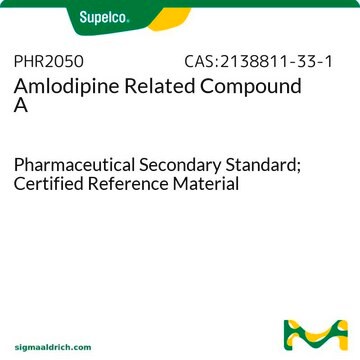Y0000561
Vecuronium bromide
European Pharmacopoeia (EP) Reference Standard
Sinônimo(s):
1-[(2β,3α,5α,16β,17β)-3,17-Bis(acetyloxy)-2-(1-piperidinyl)androstan-16-yl]-1-methyl-piperidinium bromide
About This Item
Produtos recomendados
grau
pharmaceutical primary standard
família API
vecuronium
fabricante/nome comercial
EDQM
aplicação(ões)
pharmaceutical (small molecule)
formato
neat
temperatura de armazenamento
2-8°C
cadeia de caracteres SMILES
[Br-].CC(=O)O[C@H]1C[C@@H]2CC[C@@H]3[C@H](CC[C@@]4(C)[C@H]3C[C@@H]([C@@H]4OC(C)=O)[N+]5(C)CCCCC5)[C@@]2(C)C[C@@H]1N6CCCCC6
InChI
1S/C34H57N2O4.BrH/c1-23(37)39-31-20-25-12-13-26-27(34(25,4)22-29(31)35-16-8-6-9-17-35)14-15-33(3)28(26)21-30(32(33)40-24(2)38)36(5)18-10-7-11-19-36;/h25-32H,6-22H2,1-5H3;1H/q+1;/p-1/t25-,26+,27-,28-,29-,30-,31-,32-,33-,34-;/m0./s1
chave InChI
VEPSYABRBFXYIB-PWXDFCLTSA-M
Informações sobre genes
human ... CHRNA1(1134) , CHRNB1(1140) , CHRND(1144) , CHRNE(1145) , CHRNG(1146)
Procurando produtos similares? Visita Guia de comparação de produtos
Descrição geral
Aplicação
Embalagem
Outras notas
Palavra indicadora
Warning
Frases de perigo
Declarações de precaução
Classificações de perigo
Acute Tox. 4 Oral
Código de classe de armazenamento
11 - Combustible Solids
Classe de risco de água (WGK)
WGK 3
Ponto de fulgor (°F)
Not applicable
Ponto de fulgor (°C)
Not applicable
Escolha uma das versões mais recentes:
Certificados de análise (COA)
Lamentamos, não temos COA para este produto disponíveis online no momento.
Se precisar de ajuda, entre em contato Atendimento ao cliente
Já possui este produto?
Encontre a documentação dos produtos que você adquiriu recentemente na biblioteca de documentos.
Nossa equipe de cientistas tem experiência em todas as áreas de pesquisa, incluindo Life Sciences, ciência de materiais, síntese química, cromatografia, química analítica e muitas outras.
Entre em contato com a assistência técnica



